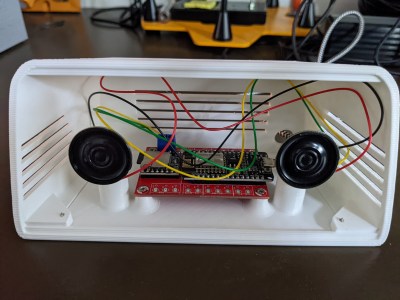We just love it when y’all build off of each other’s projects. This spooky Halloween noise maker from [C.M. Herron] is no exception. But while the projects we’ve seen lately rely on external computers and/or guitar pedals to create the effects part of the build, this one has everything running on a Raspberry Pi that sits inside the box.
Readers of a certain vintage will recognize this as an 8-track storage box, on top of which are several noise-making objects that creak and ting and reverberate nicely. A USB microphone picks up the sounds, and by using a regular microphone instead of a piezo, [C.M.] can introduce varying levels of feedback to make the sounds even spookier.
So, how did [C.M.] make this work on a Pi 4? To put it simply, they’ve got the Reaper DAW and Windows Valhalla plugins running on top of WINE, which running on top of Box64, which is running on top of the Bullseye Pi OS. [C.M.] sure learned a lot from this build, and hopes to inspire others to build their own spooky noise boxen. Plus, they’ve already thought of ways to improve it for next year. Be sure to check it out in action after the break.
Continue reading “2023 Halloween Hackfest: Spooky Noise Maker Is Self-Contained”





















